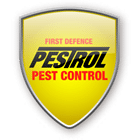Where do you check for household pests?
What pest signs do you watch out for?
 Because pests breed very quickly, ignoring a pest infestation for a few weeks could allow the pest population to increase significantly making control difficult and expensive.
Because pests breed very quickly, ignoring a pest infestation for a few weeks could allow the pest population to increase significantly making control difficult and expensive.
Pests are generally destructive; they break, bite, contaminate and scratch anything within their reach. If not dealt with immediately, pests could cause significant damage to your property, hence the need to detect them and stamp them out early. This is not as easy as it might seem, though, an infestation might be taking root in your home without you even realising it.
Detecting a pest infestation before it becomes full blown is quite difficult. This is because pests are very sneaky and remain in hiding until such a time when it’s safe to come out – usually at night when you are asleep. But even with their careful habits, pests still do leave a few signs of their presence lying around and if you look keenly in the right places, you might spot them. Before we get to the signs, let’s first look at the places most likely to harbour pests.
Where do you check for household pests?
Ideally, the whole house should be checked every once in a while for pest signs. Some areas are however more prone to pest infestation than others and should be checked more often. The high-risk areas are:
1. The Kitchen. The kitchen is especially vulnerable to pests because of the numerous vents and pipes going into it and the availability of food. These two factors make the kitchen an ideal place for pests to settle. Infestations from other areas in the house will also spread here first due to the readily available food. This makes the kitchen an important area to check for early pest detection.
2. Low traffic areas. Places that are less frequented by humans provide great hiding spots for pests. They are at a higher risk of pest invasion if they have links to the outside such as pipes, ground level windows and vents. Make sure you check your attic, basement and utility rooms often for pest signs. Also, check behind and under large appliances such as washing machines and fridges.
3. The garage. The garage is an easy access area which makes it prone to pests. In fact, a significant number of pest infestations can be traced back to the garage. Luckily, the risk of disease and contamination from pests is minimal in the garage as no sensitive items are kept here. Finding pest signs here will mean that your home is at risk of an infestation and proper action should be taken to prevent it.
What pest signs do you watch out for?
Some of the pest signs you should look out for include:
1. Active pests. As we mentioned earlier, pests rarely come out during the day. Spotting one should, therefore, be taken as an indication of a bigger problem. If you are not quite sure the type of pest it is, take a quick snap and use it do some research. Doing a thorough check of your house would also help determine the magnitude of the problem.
2. Dead bugs. If there is an active infestation taking place in your home then the chances of finding a few dead bugs are high. Check the high-risk areas regularly for this sign.
3. Pest droppings. This is another common pest sign that can be easily detected. If you find any droppings, you’ll need to do a bit of research on pest droppings to identify the pest you are dealing with. It may sound gross, but it’s what needs to be done for you to know the control measures to take.
4. Nests. Some pests such as mice, rats and birds prefer to live in nests. Rodent nests are not as elaborate as those made by birds but are still pretty easy to identify. They are made of materials found nearby and could sometimes have younglings in them. Check inside small spaces such as gaps between appliances and the wall.
5. Odd sounds. Even the sneakiest of pests will mess up once in a while and make some noise. Listen carefully at night when all is quiet and pests are very active. Wall cavities are a common hiding place for pests so put your ear on the wall and listen for any pests that might be in there.
6. Smell. It’s common for pests to produce a bad odour, either from their excrement or other body secretions. Be on the lookout for any unfamiliar smells as this could point you to the location of a nest.
7. Damaged items. Pests are generally destructive. Larger pests such as rodents can cause significant damage to your things and even the house itself. Check for gnaw and bite marks on clothes, furniture, insulation and plastics. As a rule of thumb, investigate any unexplainable damage to your property.
8. Holes. Rodents prefer to live inside the cavities between your walls. To get access, they make holes on the wall. Finding a hole in your wall could mean a pest problem so look for any of the other signs mentioned here to make sure.
9. Dried blood spots. These point to a bed bug problem. It’s not really blood but the excreta produced by bed bugs after they have fed on blood – which resembles blood when dry. Check your box springs, mattress seams and bedding for this. Watch out for a sweet offensive odour as this is also a common bed bug sign.
10. Sagging ceilings, floors and walls. This is probably the most serious pest sign you could see. Sagging on these surfaces usually indicates a termite infestation which is the worst kind of pest attack a homeowner could experience. Knock on the affected surface and listen for signs of hollowness to confirm the suspicion. If you identify termites, make sure to act fast as the damage could be very serious. Other termite signs include: pellet shaped faeces near the damaged wood and shed wings in small piles.
The trick to dealing with pests effectively is to catch them early before they spread to other parts of the house and increase in population. Catch them early and getting rid of them won’t be much of a problem.
Check out our range of pest control products > мфо онлайн займвзять займ на банковский счетзайм под материнский капитал ижевск




